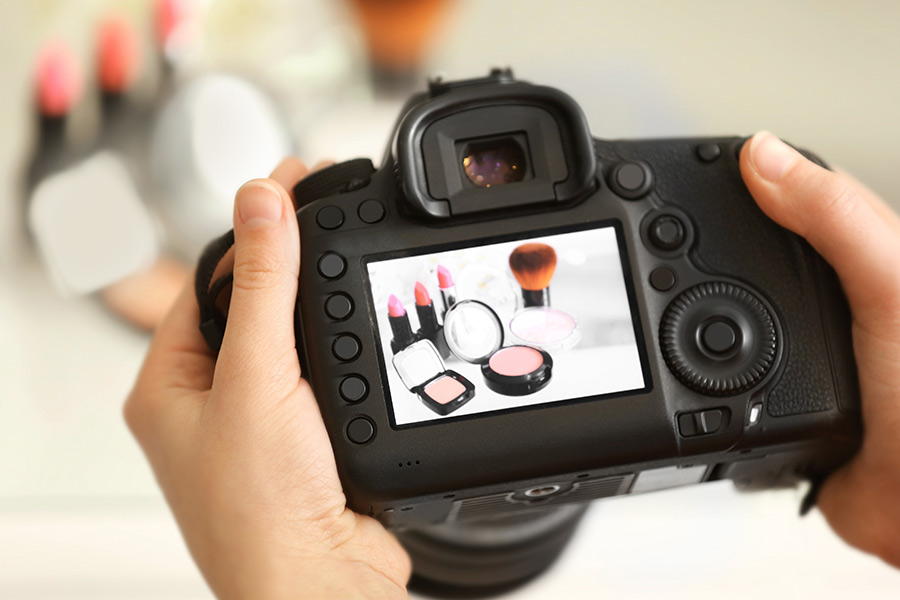Resources - Blog
Your Amazon Product Image Optimization Checklist

Stay on top of the latest e-commerce and marketplace trends.
An aspect of your Amazon product listings that may be undervalued or ignored today — and can play a significant role in influencing the consumer’s buying process — is your choice of images. Using compelling images to help describe the items you are selling gives customers relevant information, and can be especially helpful for describing the condition of used and collectible items. We have put together a list of best practices to make sure that your Amazon images are optimized and help demonstrate benefits and features to the buyer in a clear manner.
Each of your Amazon product listings is required to have at least one product image. The primary image for your listing is called the “main” image and is the one that represents the product in search results and browser pages. It is also the first image that potential buyers see on an item’s product detail page. Be sure to incorporate images that are clear, easy to understand, and attractively presented.
Amazon Image Requirements
Amazon has the right to remove images that are not up to par with their image standards. Therefore, it is your responsibility to ensure that you have all necessary rights to the images submitted. We have compiled a checklist for you to reference to ensure that your images are Amazon compliant, as well as optimized for clarity and discovery.
1. Represent the Product at Hand.
The photo must be of, or pertain to, the exact product being sold. The product must be clearly visible in the image.
2. Always Use a White Background.
The image must be in focus and well lit, with realistic color and smooth edges. Main images must have a pure white background to blend in with Amazon’s search and item detail pages. For other images, a white background is recommended but not required. Cropped or up-close photos are allowed, and the product should take up 85% of the image.
3. Avoid Showing Product Accessories.
The images should not include any product accessories or props that will cause confusion for the customer. However, other products or objects are allowed to help demonstrate the scale or use of the product.
4. Do Not Include Additional Graphics or Text.
Main images must show the actual product and should not include any additional text, graphics, or inset images. They should also not include any offensive materials.
5. Adhere to Amazon’s Photo Specifications.
Amazon accepts JPEG (.jpg) and GIF (.gif) for file types and the maximum file size for images is 10 MB. The resolution should be 72 pixels per inch, with a minimum dimension of 200 x 200 pixels and a maximum dimension of 2000 x 2000 pixels. The file names should consist of the product identifier, such as Amazon ASIN, 13-digit ISBN, EAN, JAN, or UPC, followed by a period and the appropriate file extension.
Differentiate Your Products With Creative Image Types
There are various ways that you can utilize product images to generate more trust between your products and the shopper and to drive more sales.
1. Product Benefit Image or Infographic
Many customers will choose to scroll through your images first before reading a product’s main description or bullet points of features. If they decide to skip over your copy, you can save the sale by incorporating images that demonstrate specific benefits or advantages of the item. By using an infographic or image that highlights a product’s benefits, you can visually demonstrate unique differentiators. You can point to or emphasize certain parts of the product and explain why they are so important. The copy included in these types of images should be clear and concise.
2. Competitor Comparison Chart
Including a secondary image with a list of features and how your item differs or is superior to a competitive product can help a shopper make up their mind if they are deciding between your product and a like item from a competitor. You can format the chart via check marks or “yes/no” columns, highlighting benefits that your item offers that a competitor may not. With these charts, you are proactively answering customers’ questions before they even have the chance to ask.
3. Lifestyle Images
Showing images of the product in use will help shoppers picture what it would be like to own the product and how it would function. Showing pictures of your items in everyday situations demonstrates how the item could add value or be applicable to their life, and makes them more confident about their buying decision.
4. Instructions
Instruction-themed images are a great way to proactively prevent negative reviews. Customers need to know how to use or put together the item by looking at your product listing, so turning one or two of your images into a digestible instruction set could be beneficial. It’s important to note that this will not work for every product type, as some items are extremely technical and have complex instructions for use, such as some electronics. You can start with short, easy-to-follow bullet points.
Final Thoughts
Images are a great way to instill trust between you and your potential customer. They play a significant role in the bigger picture of your overall Amazon SEO plan, as they help to stir up interest and inform a customer’s buying process. Sourcing high-quality photographs can be a timely process — and may involve hiring contractors such as graphic designers or professional photographers — but when done properly, you have the ability to make your product listings look much more professional and credible.
Learn what Feedvisor can do for your business.
When you partner with Feedvisor, you automatically receive access to our true, AI-driven technology and hands-on team of e-commerce experts. Contact one of our team members today to learn more about our end-to-end solution for brands and large sellers on Amazon, Walmart, and e-marketplaces.


![What You Need to Know About MAP Compliance on Amazon [Guide]](https://feedvisor.com/wp-content/uploads/2018/11/What-You-Need-to-Know-About-MAP-Compliance-on-Amazon-blog-280x186.jpg)
